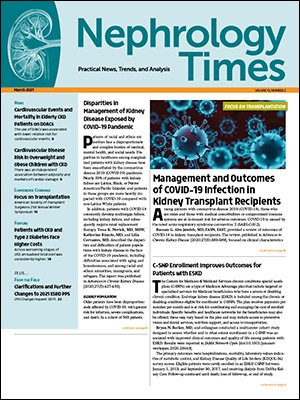
From the Field
If you have worked in the healthcare industry for any length of time, you have probably heard conversations taking place almost entirely in acronyms. We use acronyms for body parts, anatomical locations, diseases and disorders, insurance companies, claim forms, and many other things. My personal favorite grouping of acronyms is those used by Medicare to represent claim payment adjustments. This year we are fortunate enough to have two payment adjustments with fun acronyms that can apply to dialysis facility billing. The first is Transitional Drug Add-on Payment Adjustment, or TDAPA, and my favorite is Transitional Add-on Payment Adjustment for New and Innovative Equipment and Supplies, or TPNIES, pronounced tip knees.
Prior to TPNIES and TDAPA, Medicare’s reimbursement model for dialysis, the ESRD Prospective Payment System (PPS), provided reimbursement for the medications, supplies, labor, lab work, etc. that comprised the average dialysis treatment. Each year the ESRD PPS is adjusted to account for several factors, and there are several patient and facility-level adjustments intended to increase or decrease the reimbursement relative to the increase or decrease in the presumed costs associated with a patient’s dialysis treatment. However, the ESRD PPS is based largely on historical data from dialysis facilities as there were no avenues for reimbursement for new and innovative medications, supplies, or supplies that came to market for the treatment ESRD.
TPNIES
TPNIES, finalized as part of the 2020 ESRD PPS final rule, is a pathway for reimbursement under the ESRD PPS for new equipment and supplies that improves the diagnosis or treatment of Medicare beneficiaries. To qualify for reimbursement under TPNIES, the equipment or supply should meet the following criteria:
- Has been designated by CMS as a renal dialysis service
- Is new (within 3 years of the date of the FDA marketing authorization)
- Is commercially available by January 1st of the year the payment adjustment would take effect
- Has a complete HCPCS level II code application, submitted in the required time frame
- Meets the predefined criteria for innovative as it pertains to TPNIES
- Is not a capital-related asset, with the exception of home dialysis machines
For the first time, in calendar year 2022, CMS will be providing reimbursement for renal dialysis equipment under TPNIES. The Tablo® System has been awarded TPNIES beginning in 2022. In the 2022 ESRD PPS Final Rule, CMS finalized a payment adjustment of $9.50 per treatment for TPNIES-eligible home dialysis machines when they are used in the home for a single patient. CMS estimates that in calendar year 2022, reimbursement under TPNIES will be approximately $2.5 million, $490,000 of which will be attributed to beneficiary coinsurance amounts.
TDAPA
Beginning in 2018, CMS issued reimbursement for the first medications covered under TDAPA, etelcalcetide and oral cinacalcet. For me personally, it was a time of excitement and learning as there had not been a major change to dialysis reimbursement since the inception of the ESRD PPS in 2011. The readers of this column who are involved in the financial side of a dialysis facility may remember the challenging, up-hill battle that was obtaining appropriate reimbursement for the TDAPA drugs from commercial payers, Medicare Advantage Plans, and Medicaid.
This year there is an antipruritic, difelikafalin, indicated for use during hemodialysis that will be reimbursed by CMS under TDAPA for the next 2 years. At the time of this writing, CMS has yet to release information regarding the specifics of how to bill and obtain reimbursement for the new pruritis medication. Dialysis facilities that plan to utilize difelikafalin may benefit from reviewing their payer agreements to identify which payers should reimburse separately for difelikafalin and which payers likely will not provide separate reimbursement. Once these payers are identified, it may be helpful to compare the list of payers that will reimburse for the TDAPA medication to the insurance coverage held by the facility’s patients. This type of analysis may be beneficial for determining the potential financial impact of utilizing the new TDAPA medication.
Sarah Tolson is the director of operations for Sceptre Management Solutions, Inc., a company specializing in billing for outpatient ESRD dialysis programs, nephrology practices, and interventional nephrology. Your questions are welcome, and she can be reached at stolson@sceptremanagement.com, 801.775.8010, or via Sceptre’s website, www.sceptremanagement.com.







 © 2025 Mashup Media, LLC, a Formedics Property. All Rights Reserved.
© 2025 Mashup Media, LLC, a Formedics Property. All Rights Reserved.